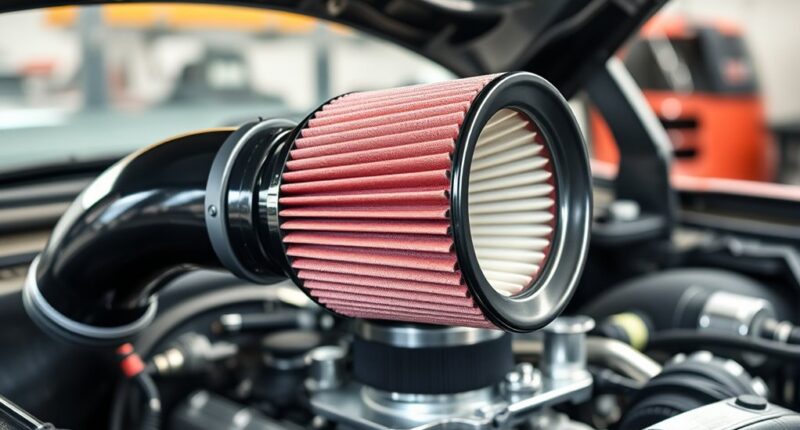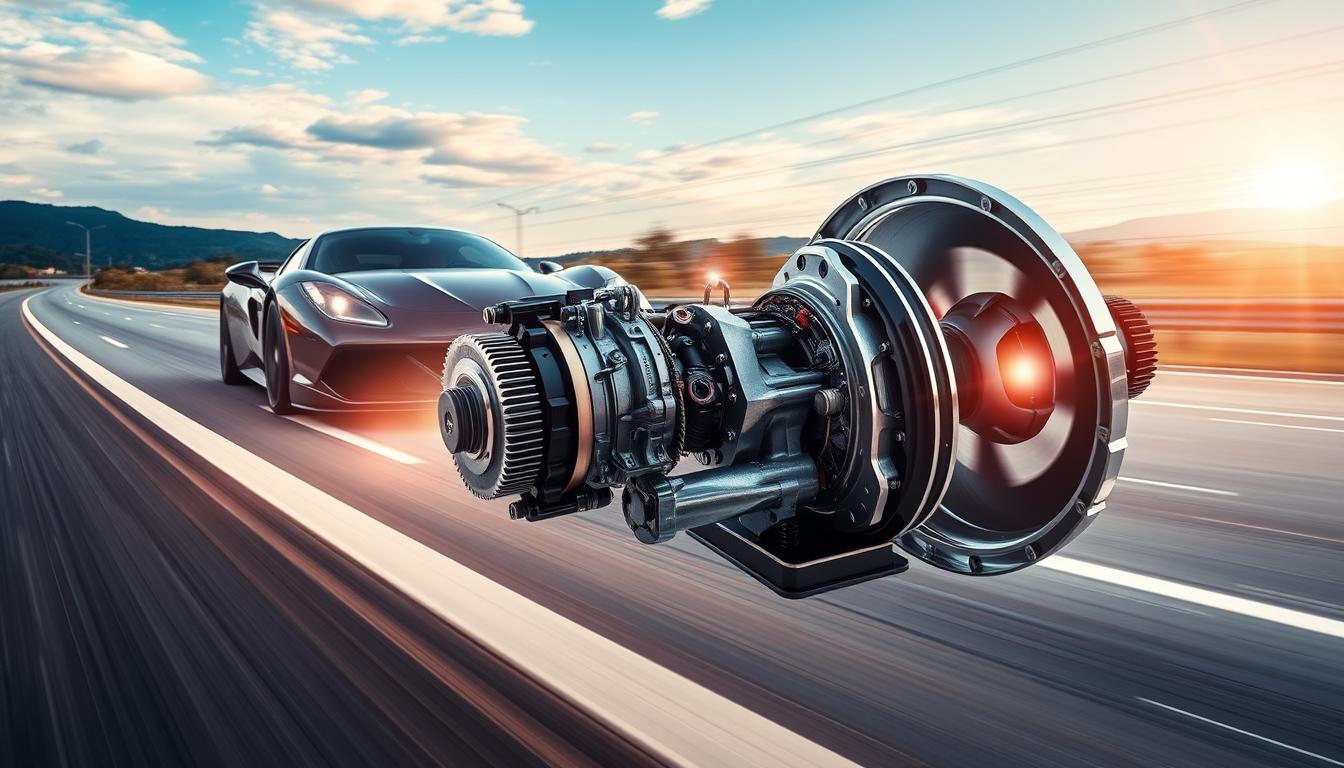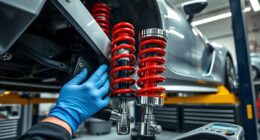Cold air intakes increase your horsepower and efficiency by providing cooler, denser air to your engine, which improves combustion. This allows your engine to produce more power while using less fuel. The better airflow reduces strain and thermal stress, extending engine life and boosting overall performance. As a result, you’ll notice smoother acceleration and better fuel economy. If you want to discover how these benefits work together to boost your vehicle’s performance, keep exploring further.
Key Takeaways
- Cold air intakes supply a higher volume of oxygen, boosting combustion efficiency and increasing horsepower.
- They enable the engine to breathe better, reducing restrictions and improving overall engine performance.
- Cooler air increases the air density, allowing more oxygen per intake cycle, which enhances power output.
- Improved airflow reduces engine strain, resulting in more responsive acceleration and smoother operation.
- By optimizing combustion and reducing heat, cold air intakes contribute to better fuel efficiency and engine longevity.

Beyond horsepower gains, cold air intakes also positively impact fuel economy. When your engine receives a better supply of oxygen, it can maintain optimal combustion. This efficiency means you don’t have to press the accelerator as much to achieve the same performance, which can lead to noticeable savings at the pump. In many cases, drivers see improvements in fuel economy because the engine operates more efficiently, consuming less fuel for the same distance traveled. It’s a smart upgrade that can pay for itself over time, especially if you drive regularly or do a lot of city commuting. Additionally, cold air intakes can help extend engine life by reducing engine heat, which contributes to overall vehicle durability.
Frequently Asked Questions
Do Cold Air Intakes Void Vehicle Warranties?
Cold air intakes can potentially void your vehicle’s warranty if they conflict with manufacturer policies. You should always check warranty considerations before installing one, as some manufacturers may see it as an aftermarket modification that voids coverage. To avoid issues, keep documentation of the installation and consult your vehicle’s warranty terms. When in doubt, contact your dealer for clarity on their specific policies regarding cold air intake modifications.
How Often Should I Clean My Cold Air Intake?
Ever wonder when to clean your cold air intake? You should check your air filter regularly—at least every 10,000 to 15,000 miles or more often if you drive in dusty conditions. Proper intake cleaning frequency keeps your engine breathing freely and maintains ideal performance. Don’t wait for a noticeable drop in power; proactive air filter maintenance ensures your cold air intake stays in top shape, boosting efficiency and longevity.
Can a Cold Air Intake Improve Fuel Economy?
A cold air intake can improve your fuel economy by optimizing airflow, which helps your engine run more efficiently. When your engine breathes better, you’ll notice better fuel savings and a reduction in emissions, positively impacting the environment. Keep in mind, though, that the actual gains depend on driving habits and maintenance. Properly installed and maintained, a cold air intake is a smart upgrade for both performance and eco-friendliness.
Are Cold Air Intakes Legal in All Regions?
Cold air intakes aren’t legal everywhere, as regional regulations and emission standards vary. You need to verify your local laws before installing one, since some areas restrict modifications that alter emissions or noise levels. In certain regions, cold air intakes may require specific certifications or may be prohibited altogether. Always research your local regulations to ensure you’re compliant and avoid potential fines or issues with vehicle inspections.
What Is the Typical Cost of Installing a Cold Air Intake?
They say “you get what you pay for,” and installation costs for a cold air intake typically range from $150 to $500, depending on your vehicle and whether you install it yourself or hire a pro. Aftermarket options vary widely in price, with more premium systems costing more. Keep in mind, investing in quality parts and proper installation guarantees better performance and longevity for your cold air intake.
Conclusion
Installing a cold air intake isn’t just a simple upgrade — it’s like giving your engine superpowers. You’ll feel the surge of power every time you hit the gas, making your car faster and more efficient than you ever imagined. With a cold air intake, your vehicle transforms into a powerhouse that leaves others in the dust. Get ready to dominate the road — your engine’s new secret weapon is here to take your driving to legendary heights!









